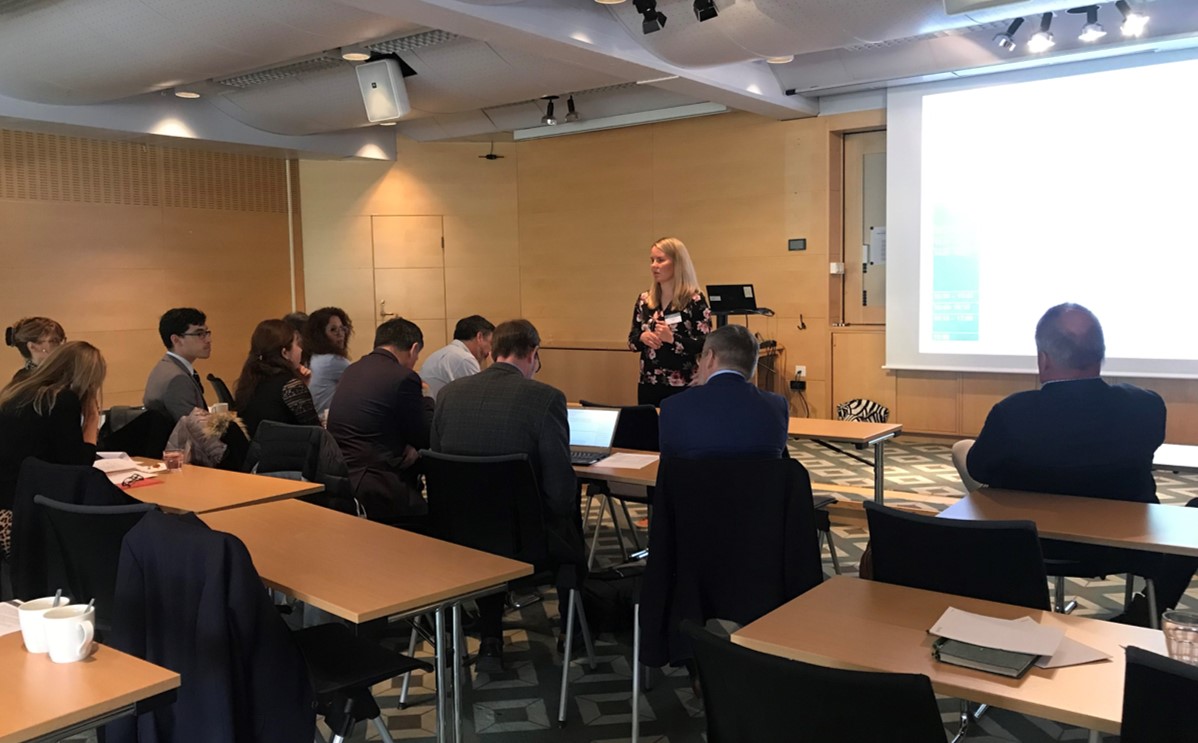
Quality of life in mining regions – takeaway messages from the MIREU & OECD pre-conference workshop
- Mon, 30/09/2019
There is increasing recognition across the globe that the extraction of natural resources needs to generate improved well-being and quality of life for mineral producing regions. If local communities do not see mining adding value to their lives, their support for mining and extractive activities will most likely decrease. Consequently, improving lives for citizens is not only important on the individual level but it also contributes to the region's competitiveness and can reduce regional inequalities. The key questions are, how do we assess quality of life in mining regions; what well-being indicators can be used and what examples can we use to demonstrate good practice?
With these questions on the table, MIREU and the OECD kicked off their pre-conference workshop at the third OECD Meeting of Mining Regions and Cities, which was organised in Skellefteå, Sweden, in June 2019. The participants of the workshop represented a wide range of stakeholders, such as industry representatives, local and regional authorities, indigenous groups and civil societies from 15 countries from around the world.
The first question that participants tackled was what well-being indicators exist in order to assess quality of life in mining regions that would enable better policy making for regional development. The participants emphasised the need for data from the local and regional levels, which is largely missing. Although individual mining companies or the national institutions collect data on well-being and follow quality of life indicators, the data is either company specific or covers other industries in the region, or nation-wide information on the well-being among mining and metallurgy industries is not available. Therefore, it is not possible to filter regions on key criteria to enable meaningful comparisons and to build clusters. There is definitely a need for a common database for regions and cities specialised in mining and metallurgy, in order to adapt to the needs of mining regions and to capture current states of well-being as well as ways to secure the well-being of future generations.
The second question investigated by participants was whether there are any leading global practices that could inform better policies. The participants were able to choose between three different themes to discuss, namely: environmental issues; attracting (and retaining) labour and developing skills; and service delivery and inclusiveness of growth. The participants shared the opinion that there should be more transparency regarding data, especially related to environmental impacts. Further, the mining and metallurgy industry should follow the global trend of other industries and increase the traceability and green labelling for the raw material products. This would most likely also increase the raw material awareness of the society as well as the social acceptance of the industry.
The mismatch of skills, ageing experts, but also evolving techniques (e.g. automation) and a thin labour market were seen as the biggest challenges for attracting and retaining labour in the mining sector. Furthermore, the sector does not appeal to younger people and the shortage of skilled personnel will increase in the future. It would be beneficial to increase collaborative governance and partnerships between government, industry, educational institutions and the local municipalities to enhance education and training within the raw materials sector. Building local or regional value chains would also increase the perception of mining as a solid working place and important local employer.
One of the biggest challenges in mining regions is attracting labour outside of the sector. This is often due to the high housing prices and a lack of services. Mining companies sometimes have services and housing for their own workers but not for workers outside of the mining and metallurgy sector. This will result in lack of staff in other, often lower income sectors such as health and childcare, which again affects the readiness especially of the workers with family to move in mining regions. Good examples of overcoming these challenges were presented by participants. In many regions the collaboration between the public and private sector, for example building houses has been successful way to fill the service gaps and approach to solve problems collectively. Another consideration was how universities both attract new inhabitants but also diversify the local income structure by developing the local workforce.
The workshop played host to many interesting discussions and the participants were able to take part of best practices and experiences from across the world. The MIREU project was happy to be part of this workshop and to bring our European perspective into the global discussion.
The official conclusions of the pre-conference workshop will be published by the OECD in due time. If you are interested in this topic, you can find more information in this discussion paper prepared by the OECD for the third OECD Meeting of Mining Regions and Cities.
Comments